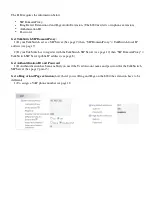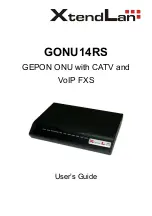
2
TALKSWITCH VOIP NETWORK CONFIGURATION GUIDE
TALKSWITCH VoIP
TalkSwitch uses the industry-standard Session Initiation Protocol (SIP) to make
and manage VoIP calls. In this guide the term SIP is often used in place of VoIP.
To connect to a VoIP network or VoIP service to make and receive SIP calls, each
location must be able to establish a high-speed connection to the Internet, or
private network. The steps below should ensure success for typical network
connection methods.
Connect to a LAN and IP network
Ensure the TalkSwitch or gateway is connected to a Local Area Network (LAN),
equipped with an Ethernet switch and router, or a router with an integrated
switch. A PC should be connected to the LAN, for configuring the TalkSwitch, as
well as the router and/or switch.
FIGURE 1.
TalkSwitch network configuration
Confirm the network connection has sufficient capacity for VoIP
Ensure that the LAN in each location has a reliable high-speed broadband
connection to the Internet. The quality of VoIP calls, especially on mixed voice
and data networks, depends on high data-transfer rates across the network. ‘Lite’
broadband connections are not suitable for simultaneous voice and data traffic.
To test the VoIP call capacity based on your Internet connection speed, perform the
test available on our website at:
www.talkswitch.com/voip/voip_test.asp
.
Ensure there is a path for voice data through your router/firewall
In order to pass through a router’s firewall, voice data received by your network
must be mapped to the appropriate TalkSwitch unit. TalkSwitch uses UPnP
(Universal Plug and Play) to automatically map firewall ports to forward VoIP
data. If your router supports UPnP, ensure that it is enabled (see your router
documentation for configuration details).




















